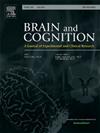反刍与社交焦虑的神经关联:vmPFC连通性在静息状态fMRI中的中介作用
IF 1.4
3区 心理学
Q3 NEUROSCIENCES
引用次数: 0
摘要
反刍与社交焦虑密切相关,被认为是其发病和持续的关键认知因素。这两个过程都涉及与自我参照认知和情绪调节相关的大脑功能;然而,连接反刍和社交焦虑的神经通路仍然不完全清楚。利用来自470名参与者的静息状态神经成像数据,我们进行了基于体素的功能连接分析,重点关注腹内侧前额叶皮层(vmPFC),这是一个涉及自我参照加工和情感调节的关键区域。结果表明,vmPFC前部与左侧额下回(IFG)和右侧额上回(SFG)之间的功能连通性与反刍和社交焦虑均显著相关,并介导了它们之间的关联。值得注意的是,与社交焦虑相关的功能连接主要在vmPFC前部而不是后部观察到,这表明社交焦虑可能与对社会价值和奖励线索的高度敏感性密切相关。本研究揭示了vmPFC在整合自我相关认知和情绪调节中的核心作用,揭示了其功能连接如何介导反刍对社交焦虑的影响,从而加深了我们对社交焦虑的神经机制的理解。本文章由计算机程序翻译,如有差异,请以英文原文为准。
Neural correlates of rumination and social anxiety: Mediating role of vmPFC connectivity in resting-state fMRI
Rumination is closely associated with social anxiety and is considered a key cognitive factor in its onset and persistence. Both processes engage brain functions related to self-referential cognition and emotional regulation; however, the neural pathways linking rumination and social anxiety remain incompletely understood. Using resting-state neuroimaging data from 470 participants, we conducted voxel-based functional connectivity analysis focusing on the ventromedial prefrontal cortex (vmPFC), a key region implicated in self-referential processing and affective regulation. Results showed that functional connectivity between the anterior vmPFC and the left inferior frontal gyrus (IFG) and the right superior frontal gyrus (SFG) was significantly associated with both rumination and social anxiety, and mediated their association. Notably, functional connectivity related to social anxiety was primarily observed in the anterior rather than the posterior vmPFC, suggesting that social anxiety may be closely linked to heightened sensitivity to social value and reward cues. This study reveals the central role of the vmPFC in integrating self-related cognition and emotion regulation, demonstrating how its functional connectivity mediates the influence of rumination on social anxiety, thereby deepening our understanding of the neural mechanisms underlying social anxiety.
求助全文
通过发布文献求助,成功后即可免费获取论文全文。
去求助
来源期刊

Brain and Cognition
医学-神经科学
CiteScore
4.60
自引率
0.00%
发文量
46
审稿时长
6 months
期刊介绍:
Brain and Cognition is a forum for the integration of the neurosciences and cognitive sciences. B&C publishes peer-reviewed research articles, theoretical papers, case histories that address important theoretical issues, and historical articles into the interaction between cognitive function and brain processes. The focus is on rigorous studies of an empirical or theoretical nature and which make an original contribution to our knowledge about the involvement of the nervous system in cognition. Coverage includes, but is not limited to memory, learning, emotion, perception, movement, music or praxis in relationship to brain structure or function. Published articles will typically address issues relating some aspect of cognitive function to its neurological substrates with clear theoretical import, formulating new hypotheses or refuting previously established hypotheses. Clinical papers are welcome if they raise issues of theoretical importance or concern and shed light on the interaction between brain function and cognitive function. We welcome review articles that clearly contribute a new perspective or integration, beyond summarizing the literature in the field; authors of review articles should make explicit where the contribution lies. We also welcome proposals for special issues on aspects of the relation between cognition and the structure and function of the nervous system. Such proposals can be made directly to the Editor-in-Chief from individuals interested in being guest editors for such collections.
 求助内容:
求助内容: 应助结果提醒方式:
应助结果提醒方式:


